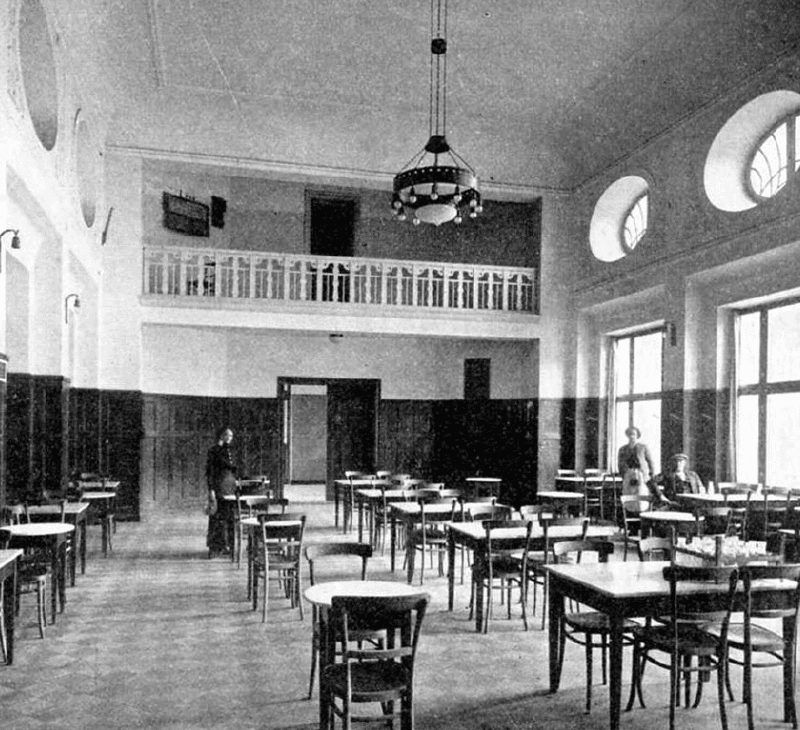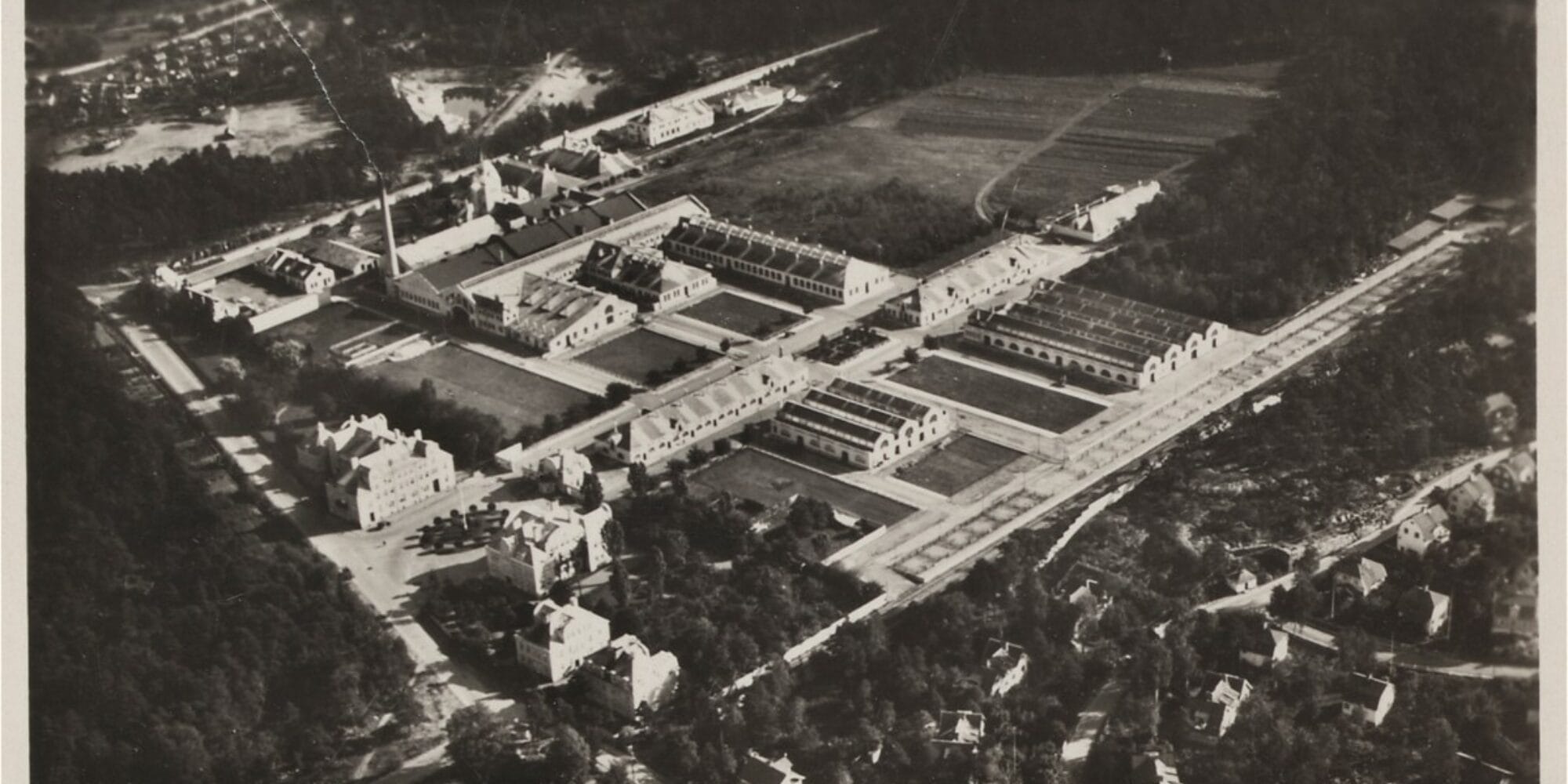
From cattle to creators
Stock Exchange House Slaktis
At the end of the 19th century, plans began for a public slaughterhouse outside Stockholm. The architect Gustaf Wickman held the pen when the marshland in Johanneshov was to be transformed into a 28,000 square meter cattle market area. On January 31, 1912, King Gustav V cut the ribbon for the inauguration of the new meat industry.


At the entrance to the area was the Börshuset – a three-storey building in the Art Nouveau style. With its characteristic bull’s-eye windows, irregular design and sand-lime brick façade, it stood out from the surrounding buildings. The building was primarily intended for commission agents who brokered livestock deals, but it soon became a place for many other things: a bank, food storage, telegraph and national telephone station, police station, post office, hotel and restaurant. It is easier to say what the Exchange House was not .
The house’s vintage features have been revealed during the renovation. We’ve found beautiful stone floors under plastic carpets and stunning ceiling paintings behind rebuilt beams. They are now part of the interior, which is described as fleshy Art Nouveau.
For over a hundred years, Börshuset has been a place where people from all kinds of industries have met and exchanged experiences. Now A house is carrying on the tradition.

